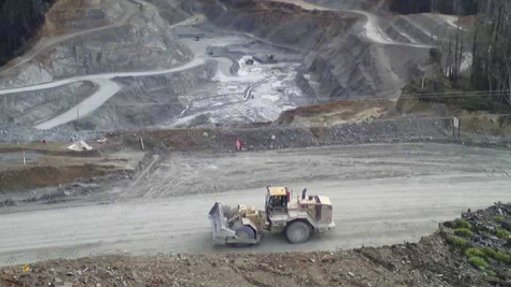
Name: Reefton mine.
Location: Reefton mine is located about 7 km south-east of Reefton, in the West Coast region of New Zealand’s South Island.
Holding and Controlling Company: OceanaGold (New Zealand) Limited, a wholly owned subsidiary of OceanaGold Corporation.
Brief Description: Reefton comprises a series of openpits, which includes the Globe Progress mine, developed along a major regional shear structure, and its offshoots, as well as a group of mineral permits, with a combined area of 30.12 ha, covering the Reefton goldfield.
Brief History: Alluvial gold was first discovered in the Reefton area in 1866, at the zenith of the West Coast gold rush. Efficient dredging operations of the local rivers and tributaries from 1900 to 1913 and from 1934 to 1957, and alluvial mining from 1980 to 1997, have led to about eight-million ounces of gold being recovered.
Reefton started production in 2007, but was placed on care and maintenance in May 2016 after all stockpiled ore had been processed.
In December 2016, OceanaGold announced that it would start closure and rehabilitation of the Reefton mine site. The closure of the mine will take several years to complete.
At closure, the mine will have produced 610 000 oz of gold over ten years, contributing to about 20% of New Zealand’s gold production for the same period.
Products: Gold.
Geology/Mineralisation: Gold mineralisation in the Reefton goldfield is orogenic-style and the deposits occur in and around steeply dipping, north to north-northeast-trending shear zones that cut across the hinges of earlier folds in weakly altered metasedimentary rocks.
The deposits are similar in many respects to those found at Bendigo and Ballarat, in Victoria, and Gympie, in Queensland, Australia; Nova Scotia, in Canada; Beaconsfield, in Tasmania: and the ‘Mother Lode’ deposits of California, in the US.
Most of the gold-bearing mineralisation, including all the larger deposits, is arranged along a linear belt, which runs about north to south through a sequence of deformed metasedimentary rocks of the Greenland Group.
This suggests the presence of a deep-seated structure that has permitted mineralising fluids to migrate from their source to sites in the upper crust where the gold was deposited.
The Reefton goldfield’s dominant styles of gold mineralisation comprise coarse native gold associated with minor sulphides in quartz veins, and microscopic refractory gold within sulphides in sheared sediments and clay alteration (pug) zones adjacent to the quartz veins.
The coarse native gold comprises the majority of historical gold production; however, both styles provide important exploration targets.
Reserves: In December 2016, OceanaGold announced the closure of the
Reefton mine and removed the Reefton reserves from its mineral inventory. The resources, however, have been retained in the company’s inventory.
Resources: Total measured and indicated resources as at December 31, 2016, were estimated at 7.8-million tonnes, grading 1.54 g/t gold.
Total inferred resources as at December 31, 2016, were estimated at 1.4-million tonnes grading 1.1 g/t.
Mining Method: Openpit.
Major Infrastructure and Equipment: Reefton mine’s infrastructure includes openpits, a tailings storage area, waste rock disposal areas, a process plant and access roads.
Prospects: A comprehensive closure and rehabilitation programme is under way. Once closure and restoration are complete, the site will be returned to the Department of Conservation.
Contact: OceanaGold Corporation VP, investor relations Sam Pazuki or Jeffrey Sansom.
Contact Details:
OceanaGold Corporation
Tel +1 604 235 3360 (Canada)
Tel +61 3 9656 5300 (Australia)
Email info@oceanagold.com
Website www.oceanagold.com